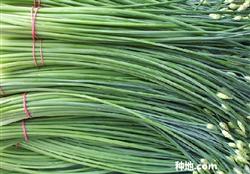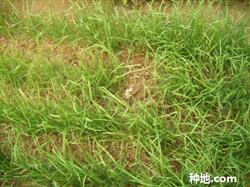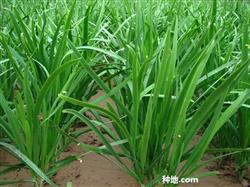What should I pay attention to when planting leek flowers?

What should I pay attention to when planting leek flowers? In recent years, leek flower because of its high nutritional value, contains a lot of vitamins, minerals, fiber, protein, carbohydrates, calories, etc., unique flavor, and widely loved by consumers at home and abroad. Chives introduced from Taiwan are favored by growers because of their high yield and high quality. The planting area of the whole province is increasing year by year. 1. Variety selection At present, Taichung 11 and Taichung 13 lotus series introduced from Taiwan are the main varieties cultivated in the market. Its plant growth is vigorous, tiller number is many, cold and heat resistance, fast growth, early bolting, thick flower moss, delicious taste, good quality, can be harvested all year round, the average yield per mu is 1000-2000 kg. II. Sowing seedlings 1, sowing time: available seed and plant two methods of reproduction, at present mostly seed reproduction, generally after August began to concentrate on seedlings. 2, sowing seedlings: the amount of seed used per mu is 0.5 kg. Before sowing, the whole ridge shall be arranged, each ridge shall be 1.5 meters wide and leveled, and the shallow groove shall be directly raked on the leveled ridge surface, 6 cm wide and about 2 cm deep. Sow seeds in furrows. Sweep the furrows after sowing. Gently loosen the soil and compact it. Water the furrows immediately after sowing. Water the furrows once every 2 days to keep the soil moist. Apply thin fertilizer once 20 days after germination, pay attention to drainage in rainy days, pay attention to the occurrence of diseases and insect pests, and strengthen management. III. Selection of plots and border construction Chives avoid acidic soil, pH 5.6-6.5 is more appropriate, sand, loam, clay can be cultivated, but with good drainage, fertile soil loam is the most ideal. 1.5 Rice bag ditch from the ridge, leave a working row, open deep ditch around to facilitate drainage, mu of high-quality manure 3500 kg or soil fertilizer 3000 kg, compound fertilizer 60 kg to do base fertilizer. IV. Planting After 70-80 days of sowing, leek seedlings can be transplanted to the field when each plant tillers 2-3 plants, the planting row spacing is generally 27×24 cm, 4-6 plants per hole, which can be adjusted according to the habits of growers. When planting, attention should be paid to the planting depth. After planting, irrigation should be carried out immediately to facilitate survival. V. Field management Fertilization: leek flower is a fertilizer-tolerant vegetable and has a long growth period, so sufficient fertilizer must be applied during cultivation. Generally speaking, more nitrogen fertilizer can increase yield, less fiber and tender, appropriate phosphorus fertilizer can promote root group development and bolting, potassium fertilizer can increase disease resistance, but more fertilizer can make fiber thicker and lower quality. When Chinese chive flower seedling stage, dilute human excrement or 2% urea is generally applied once every 10-15 days or 800-1000 times of fast green essence is sprayed once every 7-10 days. N, P and K should be applied together during bolting period, but nitrogen fertilizer should be the main one. 16 kg compound fertilizer can be applied every 10-15 days. Pay attention to phosphorus fertilizer application. Excessive application will reduce yield instead. 2, leek avoid wet, so in case of rain in leek flower cultivation should pay attention to drainage, no ponding phenomenon. However, long-term drought will reduce tillers, shorten leaves, and sprout short and thin. Therefore, attention must be paid to keeping the soil moist frequently and irrigating it as appropriate to make it develop normally. Such as high water level section, pay attention to build high ridge not to make water level beyond the rhizosphere above, so as not to hinder the development of root groups. 3. From the second year of cultivation, cover the ridge surface with a layer of loose soil 5-7 cm thick every spring to protect the roots, so as to facilitate the good development of the roots with strong tillering power. VI. Pest Control 1. Leek rust: leek rust is mainly harmful to leaves, which occurs seriously at 15-20℃ and relative humidity above 90%. 65% zinc can be sprayed 400 times. 2. Leek blight: leek blight occurs frequently in rainy and humid seasons. It can be prevented and controlled by spraying 600 times of 58% Ruidumei powder or 500 times of 64% disinfectant alum wettable powder. 3. Leek gray mold: spray 50% Sukening 1000 times to control it. 4. Onion thrips: 90% methomyl wettable powder or 25% bromosulfuron can be sprayed. 5. Allium liriomyza: 50% thimide 1000 times solution can be sprayed for control. 6. Allium maggot: 75% phoxim 500 times solution can be used for prevention and control. VII. Harvesting Picks the insect leaf axil to extract the flower moss which is still tender before the flower bud blooms, forms a bunch according to the flower moss grade to sell, harvests once a day or every other day, if meets the low temperature every 2-3 days harvests once. VIII. Variety update Although leek is a perennial crop, in the natural state, after 5-6 years, the tillering ability weakens and the growth potential declines. The leek flowers dominated by harvest flowers and moss must be renewed after 3-4 years of sowing, otherwise they will become gradually weak after many harvests, with short stems and leaves, poor quality of flowers and moss and loss of commodity value. Click to see more leek planting technology Click to see more vegetable planting technology
- Prev

Why do leeks have yellow leaves?
Why do leeks have yellow leaves? How to solve the yellow leaves of leek has the following possibilities: first, lack of trace elements. Leeks with yellow leaves are generally not sprayed or sprayed with trace elements such as iron, copper and zinc, and yellow leaves are formed due to the lack of such elements. Second, partial application of nitrogen fertilizer, nitrogen, phosphorus and potassium imbalance, so as to inhibit trace.
- Next

What should we pay attention to when planting leeks?
How to manage the leek field? After turning green, leek should remove the withered leaf weeds in the upper ground as soon as possible, flatten the border surface and arrange the ridge of the border, so that the base of the plant can better accept the sun, increase the ground temperature and promote germination. When the soil thaws out new buds, you can chase a dung sparse water to promote the rebirth of buds. Ploughing and loosening the soil once after 3-4 days.
Related
- Where is it suitable to grow horseradish in China? it is expected to see the middle altitude horseradish in Alishan.
- How to prevent tomato virus disease reasonably? (Control methods included)
- Many people like to plant towel gourd on the balcony. What are the main points of this method and management?
- What crops can chili peppers be mixed with?
- Fertilization techniques and matters needing attention in Tomato
- What are the grafting techniques for peach seedlings in spring?
- Harm and control methods of root swelling disease of Chinese cabbage
- What are the pests of sweet potatoes? How to prevent and cure it?
- Symptoms, causes and Control methods of navel Rot in Tomato
- The cause of "Cucumber rotten bibcock" in Farmers' planting Cucumber and its Control Plan

